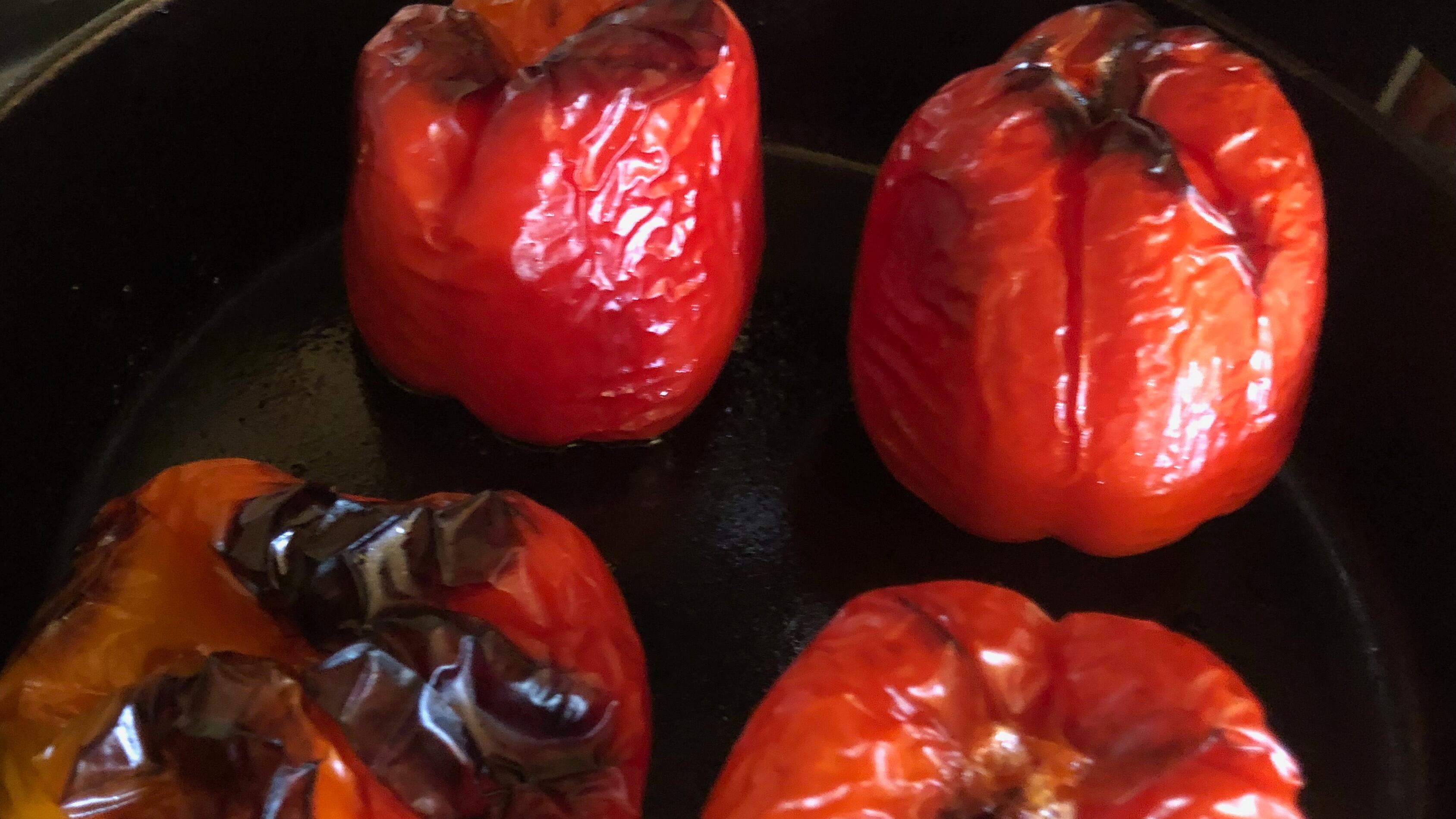Jim Dixon wrote about food for WW for more than 20 years, but these days most of his time is spent at his olive oil-focused specialty food business Wellspent Market. Jim’s always loved to eat, and he encourages his customers to cook by sending them recipes every week through his newsletter. We’re happy to have him back creating some special dishes just for WW readers.
More than 40 years ago, my very first published article appeared in Willamette Week. The nascent alternative news weekly’s regular food writer was temporarily out of action, and the relatively new editor, whom I’d met before he took the job, said something like, “Dixon, you can write and know about food, and I need copy.” So I wrote about roasting red bell peppers.
Back in the olden days of the 1970s and ’80s, roasted red peppers were considered exotic despite the fact that Mediterranean cooks had been roasting the sweet Capsicums since the 1500s when they crossed the Atlantic from their home countries in the Americas. But cookbooks like Sheila Lukins and Julee Rosso’s The Silver Palate inspired home cooks to move beyond the traditional meat and potatoes, and some of the recipes included roasted red peppers. While you could sometimes find them canned, people like me who liked to cook had to roast our own.
Recipes for roasting peppers haven’t changed much. Most call for blackening the skins under the broiler or over the flames of a gas stove, then putting the charred peppers into a plastic or paper bag to steam, which supposedly makes the skins slip off easier. My article described how I used the intense flame of a propane-powered torch to quickly scorch the peppers. (The torch was the same one I used for waxing my cross-country skis, another ancient practice.)
In the years since, I’ve roasted hundreds of red peppers, and my technique has evolved. I think the thick-skinned bell peppers taste better if they cook longer than the blow torch method allows. So I roast them in a hot oven. And I skip the whole bag-steaming step since I’ve found it’s not necessary; once roasted and cooled, the skins slip right off. While it does take a little time, most of it is unattended.
Start by choosing evenly shaped red bell peppers; the bumpy “shoulders” around the stem end should be fairly even. Use shears or scissors to trim the stems closely so the peppers can stand upside down without falling. Use a skillet or sheet pan, depending on how many peppers you’re roasting, and spread a few drops of olive oil over it.
Arrange the peppers stem end down in the skillet so they don’t touch. Roast at 400 degrees for about an hour. The skins will look brown and a little dry, but they won’t be blackened like they get with more direct heat. Remove from the oven and let cool.
Once the peppers are cool, peel off the skins while holding them over the skillet to catch any juices. I try to pull off the stem end and seed core in one piece, but if you get some seed mixed in it’s OK. Resist the temptation to rinse the peppers under running water since it washes away much of the flavorful roasting juices. And it’s fine if not every speck of skin comes off. The peppers will likely break up as you peel them, and that’s fine. As you get the skins off, place the peeled peppers in a bowl. When they’re all peeled, pour any roasting juices from the skillet into the bowl.
The roasted peppers will keep for a week or so in the refrigerator. Eat them like the Italians, drizzled with more good extra virgin olive oil, or use as an ingredient or garnish.
